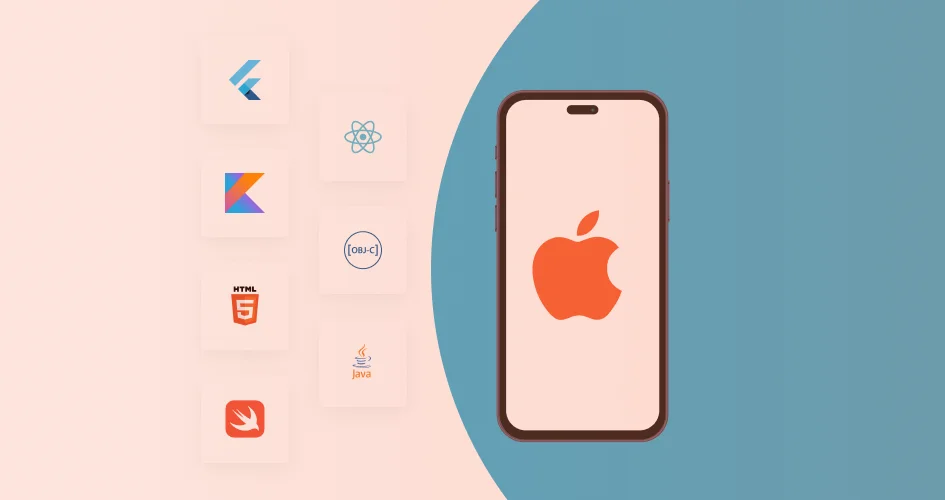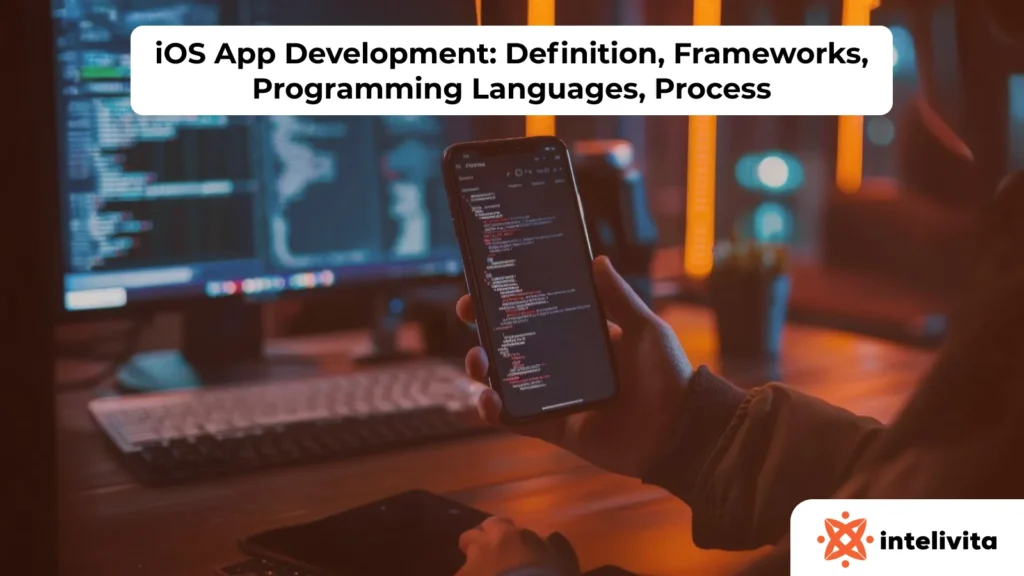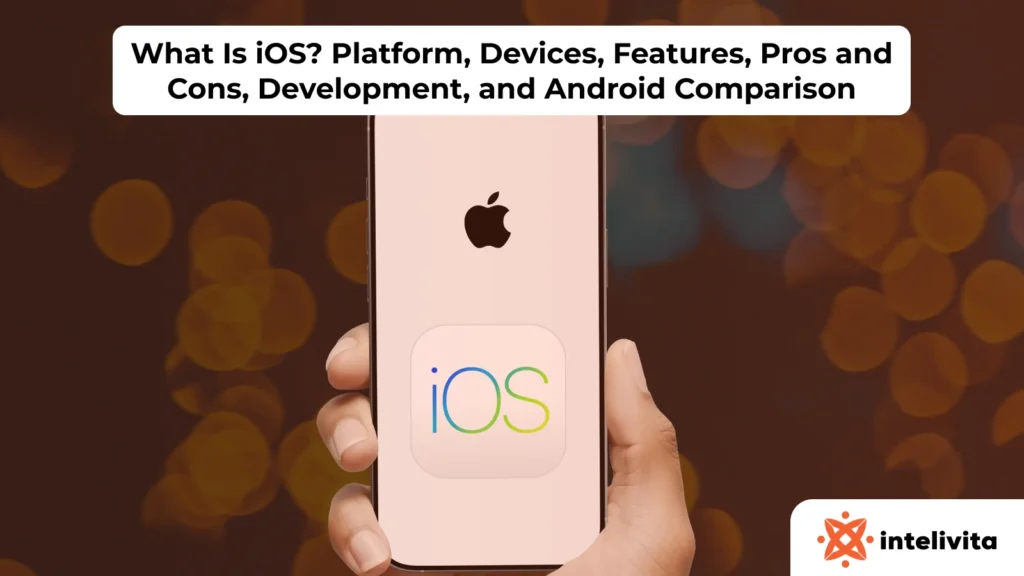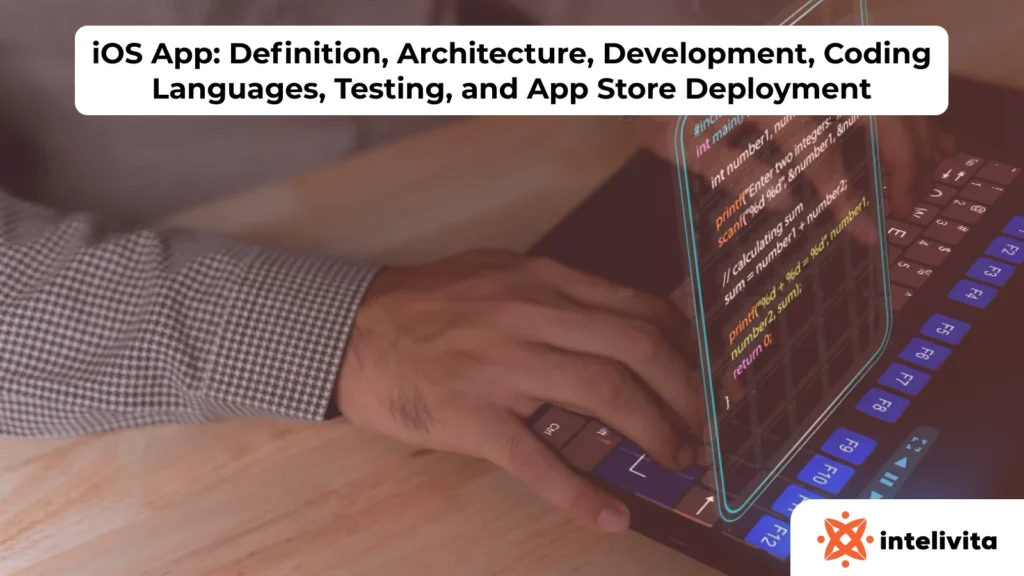Have you ever opened your iPhone and thought: What languages are iOS apps written in?
Well, it depends.
Some programming languages are suitable for simple projects, while others are more geared toward enterprise-level apps.
Before hiring an iOS app development company or even building an iOS app yourself, knowing the best iPhone development languages is crucial.
Here’s why.
Why Choosing the Right Programming Language Is Important for Your iOS App?
Choosing the best language for iOS app development is crucial for several reasons:
- Platform compatibility: Using a compatible programming language ensures that your app can take advantage of the latest iOS features, APIs, and performance optimizations.
- Developer productivity: Choosing a language that developers are familiar with or can easily learn would accelerate development timelines, reduce learning curves, and facilitate collaboration within the development team.
- Performance: Languages like Swift and Objective-C are optimized for iOS development and offer better performance compared to alternatives.
- Access to platform features: Selecting the right language means that your app can benefit from native iOS functions, integrate with device hardware, access system resources, and deliver a seamless user experience.
- Community support: If you pick a language with an active community, you will get access to valuable support, documentation, and third-party components that streamline development and address common challenges.
- App Store approval: Apple’s app marketplace has specific guidelines and requirements for iOS apps, including performance, security, and user experience standards. Choosing a programming language that aligns with these guidelines may result in a faster approval and successful app submission.
Top Programming Languages for iOS App Development
With so many programming languages to learn, where do you even begin? No worries, as this section will discuss seven iOS programming languages that you should consider.
Let’s take a look.
1. Swift
Developed by Apple, Swift is the primary programming language for iOS, iPadOS, macOS, watchOS, and tvOS app development.
Introduced back in 2014 as a replacement for Objective-C, this open-source programming language has quickly gained popularity among developers due to its simplicity, safety, and performance.
Benefits:
- Modern syntax: Swift offers a clean and expressive syntax that is easy to read and write, making development faster and more efficient.
- Safety features: It incorporates modern programming concepts to improve code safety and prevent common errors, such as null pointer dereferencing and buffer overflows.
- Performance: Similar to Objective-C, Swift is designed to be fast and efficient. It achieves this through features like lightweight syntax and optimized memory management.
- Interoperability: Swift is interoperable with Objective-C, allowing developers to use existing Objective-C code in Swift projects and vice versa. This makes it easy to adopt Swift gradually without rewriting existing codebases.
- Open source: Like any open-source language, Swift has an active and growing community of contributors, which encourages collaboration and innovation within the Swift ecosystem.
Downsides:
- Learning curve: While Swift is designed to be user-friendly, there is still a learning curve for developers transitioning from other programming languages.
- ABI stability: Swift’s ABI (Application Binary Interface) has not yet stabilized, which means that Swift libraries and frameworks may not be fully compatible between different versions of Swift. This can lead to compatibility issues and require developers to update their code frequently.
- Tooling and ecosystem: The ecosystem of libraries and tools may not be as mature or extensive as other programming languages like Java or Python.
- Compile times: Swift can have longer compile times compared to other programming languages, especially for larger projects. This can slow down development iteration cycles and increase build times for iOS apps.
2. Objective-C
Objective-C is a general-purpose, object-oriented programming language that was developed by Brad Cox and Tom Love in the early 1980s.
For decades, it has been the primary programming language for Mac and iPhone app development.
While Objective-C is still relevant today, its usage has declined since the introduction of Swift.
Built on top of the C programming language, Objective-C is fully interoperable with C code.
This allows developers to seamlessly integrate low-level C code with their Objective-C projects, giving them greater flexibility and control.
Benefits:
- Mature ecosystem: Objective-C has a mature ecosystem of libraries, frameworks, and tools that have been developed and refined over many years. Developers can easily find resources and support for building iOS apps.
- Compatibility: The language is fully compatible with the Cocoa and Cocoa Touch frameworks, meaning you can use existing Objective-C codebases and libraries when building new iOS apps.
- Dynamic messaging: Objective-C supports dynamic messaging, which allows objects to send messages to each other at runtime. The dynamic nature of Objective-C makes it easy to write highly flexible and adaptable code.
- Proven track record: iOS developers have been using Objective-C for decades to build successful and popular apps, including some of the earliest apps available on the App Store. Its long history and proven track record make it a reliable choice for iOS app development.
Downsides:
- Verbose syntax: Compared to Swift, the syntax of Objective-C can be more cumbersome and less readable, which may slow down development and make code maintenance more challenging.
- Manual memory management: Since it uses manual memory management with retain-release semantics, developers have to explicitly manage memory allocation and deallocation. If not done correctly, it can easily lead to memory leaks or crashes.
- Limited safety features: Objective-C lacks some of the safety features found in modern programming languages, such as nullability annotations and optionals. As a result, Objective-C code is more prone to runtime errors.
- Less active development: Since the introduction of Swift, the development of new features and improvements for Objective-C has slowed down. While Objective-C is still supported by Apple, the focus has shifted toward Swift as the new primary language for iOS app development.
3. Flutter
Flutter is a cross-platform framework for building iOS, Android, web, and desktop applications using the Dart programming language.
It’s the perfect choice if you want to master a single framework for building different types of applications.
Imagine the time and effort you’re saving.
Not to mention, Flutter is extremely fast and tailored to meet the modern app requirements.
Benefits:
- Single codebase: Write code once and deploy it across multiple platforms, including iOS, Android, web, and desktop.
- Fast development: Thanks to its hot reload feature, developers can instantly see the code changes they make reflected in the app, speeding up the development process.
- Beautiful UIs: Flutter offers a rich set of customizable widgets that allow developers to create visually appealing and highly interactive user interfaces.
- Performance: Flutter apps are compiled to native ARM code, which results in high performance and smooth animations.
- Access to native features: There are plugins and packages that allow you to access native features and APIs, enabling integration with device-specific functions.
Downsides:
- Limited libraries: Although Flutter’s ecosystem is growing, it may still lack some libraries or packages compared to more established frameworks like React Native or native development platforms.
- Size of apps: Flutter apps tend to have larger file sizes compared to their native counterparts, which can be a concern for users with limited storage space or slower internet connections.
- Platform-specific bugs: Despite Flutter’s cross-platform capabilities, there may still be platform-specific bugs or inconsistencies that developers need to address when targeting multiple platforms.
- Performance optimization: While Flutter offers high performance out of the box, developers may need to spend additional time optimizing their apps for performance, especially for complex or resource-intensive applications.
4. React Native
Created by Meta, React Native is one of the simplest programming languages to learn if you’re a beginner.
You can create native-like mobile apps for iOS and Android platforms from a single codebase.
On the other hand, seasoned developers can leverage their existing JavaScript and React.js skills to build mobile apps, thanks to its “learn once, write anywhere” approach.
Benefits:
- Cross-platform development: Developers will be able to build applications that run seamlessly on both iOS and Android platforms, reducing the need for separate development teams and speeding up the time to market.
- Reusable components: React Native encourages the use of reusable UI components, which are shared across different parts of the application or even between different projects. This leads to code reusability and easier maintenance.
- Hot reload: Developers can see the changes they make to the code in real time without needing to rebuild the entire application, which enhances productivity and streamlines the development process.
- Native performance: React Native bridges the gap between JavaScript and native components, resulting in applications that deliver native-like performance and user experiences, including smooth animations and responsive interactions.
- Large ecosystem: Offering a rich ecosystem of libraries, plugins, and community support, developers can access a wide range of tools and resources to enhance their apps and address various use cases.
Downsides:
- Platform dependencies: Despite its cross-platform nature, React Native applications may require platform-specific code for certain features, leading to potential complexities and inconsistencies across platforms.
- Performance limitations: While React Native offers native performance for most use cases, complex or highly graphics-intensive applications may face performance limitations compared to fully native solutions. In other words, additional optimization efforts are required.
- Bridge overhead: React Native relies on a bridge to communicate between JavaScript code and native modules, which can introduce overhead and potentially impact performance.
5. Kotlin
Kotlin is gaining popularity for iOS development through its emerging technology: Kotlin Multiplatform.
With it, developers can write shared business logic in Kotlin and deploy it on both iOS and Android platforms.
Kotlin Multiplatform seamlessly integrates with existing native codebases written in Kotlin, Java, Swift, or Objective-C, allowing developers to freely choose the language to use in their projects.
Benefits:
- Code sharing: Kotlin Multiplatform allows developers to share business logic, algorithms, and other non-platform-specific code across different platforms, reducing duplication and ensuring consistency across applications.
- Native performance: By compiling Kotlin code to native executables, Kotlin Multiplatform applications can achieve native-level performance and responsiveness.
- Access to platform APIs: With Kotlin Multiplatform, developers can access platform-specific APIs and features when necessary. This allows for platform-specific optimizations and integrations without sacrificing code sharing.
- Tooling support: Kotlin Multiplatform is supported by a robust set of development tools, including the Kotlin compiler, IntelliJ IDEA, Android Studio, and various build systems, providing developers with a familiar and productive development setup.
Downsides:
- Relatively new: Kotlin Multiplatform is still relatively new compared to other cross-platform development technologies, which means it may lack some of the features, libraries, and community support available in more established frameworks.
- Platform-specific implementations: While Kotlin Multiplatform enables code sharing across platforms, developers may still need to write platform-specific implementations or bindings for certain features.
- Tooling limitations: Kotlin Multiplatform is supported by various development tools, but some IDE features and debugging capabilities may be limited compared to platform-specific development environments. This could highly impact your productivity and workflow.
6. Java
Java was released in 1995 and has since become one of the most popular programming languages worldwide due to its simplicity, readability, and portability.
In the past, Java was used solely for building dynamic web apps, such as e-commerce sites, social media platforms, and enterprise-level systems.
But with the introduction of Swift, it is now possible to incorporate Java code into iOS apps using interoperability techniques.
Developers can use tools like JNI (Java Native Interface) or third-party libraries to bridge Java and Swift code within the same application.
Benefits:
- Code reusability: Developers familiar with Java can reuse existing codebases or libraries for iOS development, saving time and effort in writing platform-specific code.
- Cross-platform compatibility: Java frameworks like Codename One and RoboVM enable cross-platform development. Developers can build apps for multiple platforms, including iOS, with a single codebase.
- Developer familiarity: For developers experienced in Java, using the language for iOS development reduces the need to pick up new programming languages or frameworks.
- Performance: While there may be some performance overhead due to the translation of Java bytecode to native iOS code, modern Java-to-native compilers and optimization techniques can help mitigate performance issues.
Downsides:
- Limited native experience: Java-based iOS apps may lack the native look and feel of applications developed using native iOS technologies like Swift or Objective-C. This can impact user experience and may not adhere to Apple’s design guidelines.
- Compatibility and support: Your Java app might struggle keeping up with the latest iOS updates and features, potentially leading to compatibility issues.
- Platform restrictions: There are certain iOS features or APIs that your app can’t access due to platform restrictions or differences in architecture.
- Longer App Store approvals: In some cases, Java-based apps encounter additional scrutiny during the App Store review process. This is because they may be subject to stricter guidelines or requirements compared to apps developed using Apple’s recommended technologies.
7. HTML5
HTML5 is the latest version of Hypertext Markup Language (HTML), the standard markup language used to create web pages and web applications.
With frameworks like PhoneGap, Ionic, or Sencha Touch, developers can now use HTML5, along with CSS and JavaScript, to build mobile apps for both iOS and Android.
Benefits:
- Cross-platform compatibility: HTML5-based iOS apps can be easily ported to other platforms like Android and the web, reducing development time and costs associated with maintaining multiple codebases.
- Familiarity: If you have experience with web technologies such as HTML, CSS, and JavaScript, you can build iOS apps without learning platform-specific languages or frameworks like Swift or Objective-C.
- Rapid prototyping: Developers can quickly test and refine app ideas without the overhead of compiling and deploying native code.
- Distribution: HTML5-based iOS apps can be distributed through the App Store or deployed as progressive web apps (PWAs), providing flexibility in how apps are delivered and accessed by users.
Downsides:
- User experience: HTML5-based iOS apps may not provide the same level of user experience and responsiveness as native apps, leading to potential user dissatisfaction or lower adoption rates. Native iOS features and interactions may be challenging to replicate accurately using web technologies.
- Offline functionality: Native iOS apps have greater control over device resources and storage, so it’s easier to integrate offline functionality compared to HTML5 apps.
Ready to Kickstart Your iOS Development Journey?
So, which iOS programming language do you prefer?
If you’re not sure, contact our iPhone development consultants – they will be more than happy to help you out.
Simply tell us what type of iOS apps you need, and we’ll bring your ideas to life in a heartbeat.












